Menu
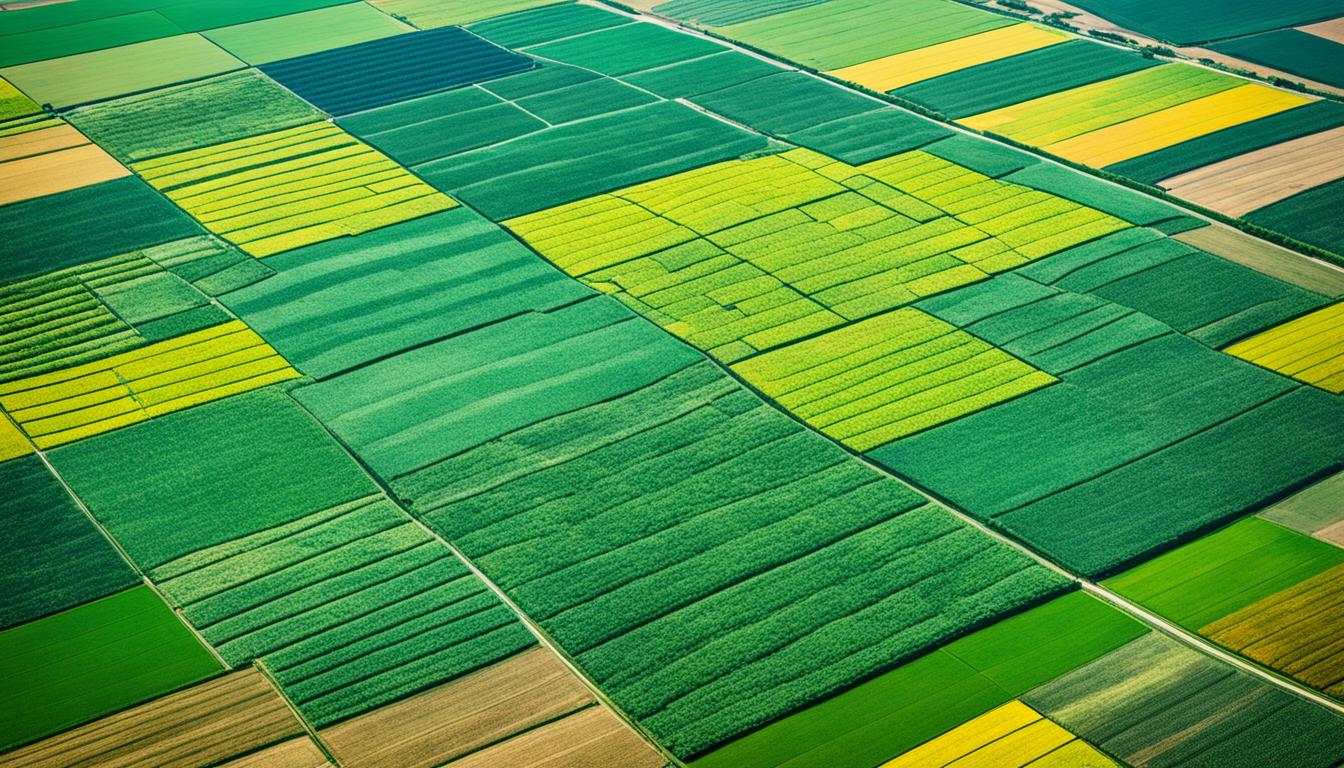
“The discovery of agriculture was the first big step toward a civilised life.” – Arthur Keith
Agriculture is vital for our food. Now, it’s using new technology to fight crop diseases. These diseases harm crops and have big effects on money, the environment, and health. Every year, the world faces more crop diseases and pests, leading to lower yields.
Farmers spend a lot trying to battle diseases with not much help. Plant diseases can also make environmental problems like loss of habitats and bad land use worse. That’s why using AI for spotting and grading disease is so important. AI, especially through ML and DL, has made a big difference in agriculture. Technologies like CNNs are very accurate in spotting these problems.
Thanks to AI, we can grow more food in a better way, helping with food security. This tech offers a new way to look after our plants. It’s all about making agriculture smarter to meet today’s challenges.
Crop disease prediction models are a game-changer in farming today. They’ve become essential as we face more crop losses from diseases and pests. These models use deep learning technology, which beats traditional methods by a mile.
Spotting diseases early is key in farming. It helps save crops and manage pests better. Tools like CNN, KNN, SVM, and ANN make it easier to diagnose early. This quick and accurate diagnosis means we can tackle diseases faster, helping farmers grow food sustainably.
Before, checking crops meant relying on human experts to look closely. But, this had its problems. It was not always consistent or objective. Also, it required a lot of knowledge. Now, using AI in disease prediction solves these issues. It makes finding diseases faster, more accurate, and easier to do on a large scale.
Machine learning is changing how we predict crop diseases. It pulls precise data from images. Then, it uses smart algorithms to spot unique signs of diseases.
These changes are making farming smarter. They help farmers deal with big problems in growing crops. Thanks to this, farming gets better and more efficient. 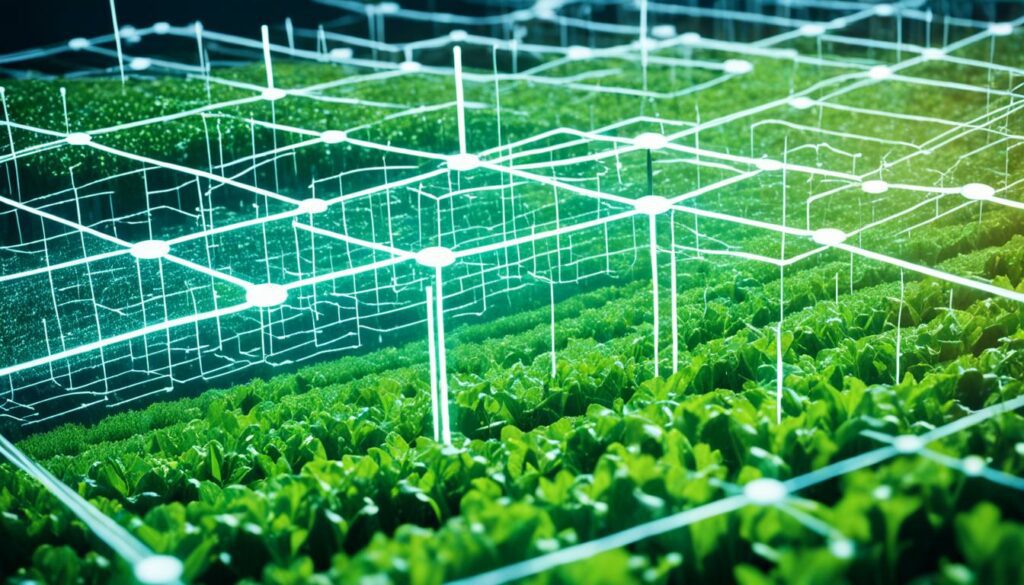
Machine learning uses many clever methods to predict crop diseases. For example, artificial neural networks and deep learning are doing a lot. They are powerful tools in figuring out what diseases crops have.
One important part is Convolutional Neural Networks. They are great at working with farm pictures. This boosts our ability to find out what’s wrong with crops. And it’s all very accurate.
The good thing is, farmers are seeing lots of wins from using machine learning. It’s cutting costs in fighting diseases. Before, disease management was expensive. Now, we can save a lot of money.
Also, machine learning gives farmers top-level advice. This high-tech help makes fighting diseases smarter. As a result, crops are turning out better. This means farming is getting more productive.
But there’s more to it than just saving money and growing better crops. Machine learning is helping farming be kinder to the planet. We now have models that look at the environment to predict diseases. These models are really good at their job.
They can reach an AUROC of 0.917, which is pretty high. Also, we know we need a lot of pictures of different crops. This helps machines understand diseases better. This way, we can fight them off more effectively.
Recent developments in deep learning are changing how we look at plant health monitoring. They use advanced algorithms to spot the early signs of diseases in plants very accurately. Convolutional Neural Networks (CNN) and Deep Belief Networks (DBNs) are two main methods that have improved this process a lot. They are really good at dealing with complex images.
Convolutional Neural Networks (CNNs) are key in deep learning for farming. They are great at finding and classifying crop diseases. CNNs have shown a high level of accuracy in telling apart different diseases quickly. This helps with spotting problems early and managing them efficiently.
Next, Deep Belief Networks (DBNs) have made big steps in plant health monitoring. They have many layers that work together to understand the signs of plant diseases. DBNs are very good at naming diseases based on digital images. This leads to strong and exact diagnoses, even with tricky, detailed data.
Bringing CNN and DBN methods together boosts how well we can predict issues. It also opens up more uses for deep learning in looking after plant health. Using these advanced technologies in farming means we can handle crop diseases better. This can result in bigger harvests and more sustainable farming.
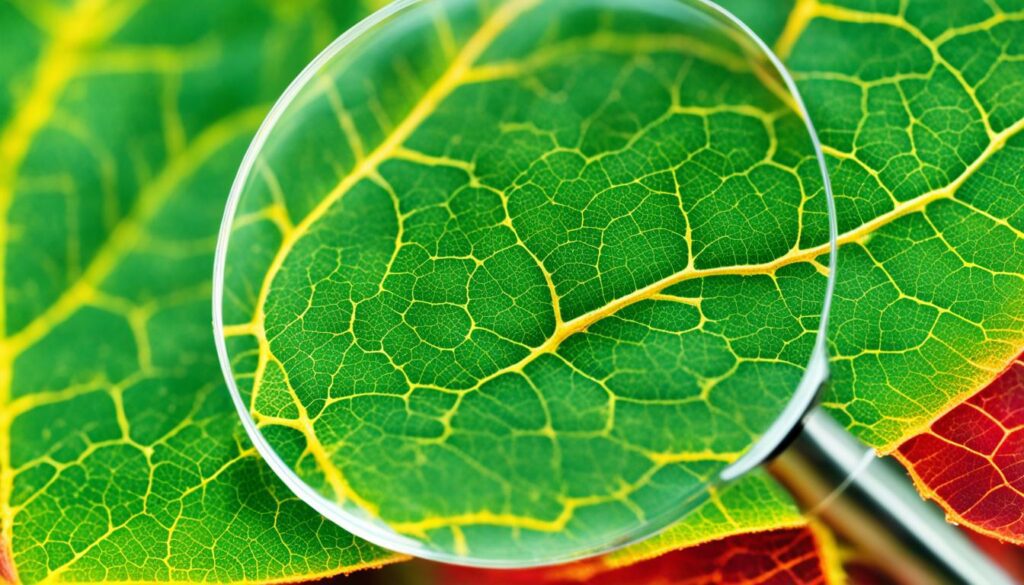
Crop disease identification has improved a lot with digital image processing and deep learning algorithms. These tools can spot diseases early and accurately. This helps farmers deal with problems faster to protect their crops.
Deep learning algorithms do a better job than old ways of spotting crop diseases. They can tell what’s wrong with a plant, how bad it is, and what type it is. This is key because crop diseases and pests are causing more damage each year.
This new way of using agricultural technology, known as deep learning, uses machine vision techniques. It looks closely at diseases to offer precise and big-scale solutions. It’s a game changer for farming.
Digital image processing is changing the game in agriculture. For example, it can inspect images of plant leaves really well. There’s even a case where it correctly identified 12 diseases 88.80% of the time. It shows what these tools can do.
Using digital image processing for crop disease identification opens new doors. It goes beyond just looking at colours and textures to using special imaging techniques. This can make disease management much better and help the environment too.
To sum up, using digital image processing and deep learning algorithms is big for spotting crop diseases. It’s making crop production stronger and healthier.
| Aspect | Conventional Methods | Deep Learning Algorithms |
|---|---|---|
| Accuracy | Lower | Higher (Up to 93%) |
| Scalability | Limited | High |
| Speed | Slower | Faster |
| Cost-Effectiveness | Varies | Generally more cost-efficient |
Adding data analysis and predictive modelling to crop disease prediction is a big step in agriculture. It requires careful steps to create models that are accurate and useful.
To start data analysis, we need big, detailed sets of information. In a key study, data began with 131,932 rows and 17 columns. This data was about many parts of crops. After a lot of work on the data, it shrank to 23,280 rows and 155 columns. These numbers focused on important details like how much the crops yield and their health scores.
This cleaning and shaping get the data ready for deep studies. Clean data means our analysis can be more accurate.
Using predictive models is important to predict and fight crop diseases early. The study showed high success with an AUROC score of 0.917 on average.
| Crop | Common Disease | Yield Loss (%) | Model AUROC |
|---|---|---|---|
| Strawberry | Powdery Mildew | Up to 70% | 0.917 |
| Tomato | Gray Mold | 15-50% | 0.917 |
| Pepper | Various Pathogens | – | 0.917 |
We use deep learning to create these powerful models. They look at environmental data like the air and soil. This way, we can spot diseases sooner and control them better. This method is more accurate and effective than older ways.
These models help use less pesticide, which is good for the environment and saves money. Pesticides cost a lot but only work on a very small part of the insects they are meant to kill. The use of modern tech in farming shows a new focus on using data wisely. This approach helps farms produce better and care for the land more sustainably.
Artificial Neural Networks (ANN) mimic biological neural networks to boost farming. They’re key in spotting crop diseases early. Thanks to machine learning, ANNs can sift through big data. They pick out signs of disease fast, helping farmers act quickly.
Artificial neural networks act like the human brain to learn and understand. They use multiple layers to process info, similar to our neurons. ANNs are superb in reading images for crop disease detection.
Through deep learning, they can spot problems better than older methods. This skill is vital for farming health checks from pictures.
ANNs offer big benefits in recognising crop problems ahead of our eyes. They’re great at looking through a lot of data fast. This cuts the chance of missing any disease symptoms. Losses in crops from diseases drop thanks to this swift and accurate detection.
They’re also useful in grading disease seriousness. This helps farmers know what actions to take. Plus, ANNs save on time and money compared to manual checking. This boosts farm income and produces better crops.
Overall, artificial neural networks are key in smartening up farming. They play a big part in modern agriculture, making it more efficient and skilled.
The rise of machine learning has revolutionised agricultural research. Especially in disease prediction, Support Vector Machines (SVM) are major players. They excel at sorting and interpreting complex data, making them perfect for today’s farming.
Support Vector Machines are top-notch at recognising patterns and making predictions. In farming, they’re great at telling healthy plants from sick ones. This is crucial since 50% of crops are lost yearly to diseases. Their skill with big, varied data helps, dealing with details like entropy and energy.

There are many tools for spotting plant diseases, like K-Nearest Neighbours (KNN) and Random Forests. Yet, SVMs often do the best, getting it right 70% to 90% of the time. Even against more complex models, they compete well, shining with small data clusters. Research shows SVMs are better than KNN in accuracy.
Let’s compare some common algorithms for disease prediction:
| Algorithm | Accuracy Rate | Suitable for |
|---|---|---|
| SVM | 70%-90% | High-dimensional datasets |
| KNN | Varies | Class prediction in plant leaf disease |
| ANN | ~90% | Pattern learning and automation |
| Random Forest | 70%-85% | General classification |
Picking the right tool is key for predicting diseases. Using SVM can significantly reduce crop losses, helping food supply and the economy.
The K-nearest Neighbour (KNN) algorithm is great for monitoring crop health. It looks at how close different bits of data are. This makes it really good at predicting if a plant is sick or not.
KNN keeps it simple. It checks what’s around a piece of data to figure out what class it belongs to. In farming, it means looking at pictures of plants and deciding if they are like healthy or sick plants. KNN is really accurate, sometimes as much as 98%, when figuring out the best crops to grow.
There’s a few steps to using KNN. First, you get data, like pictures of plants. Then, you prepare this data to make it easier for the computer to understand. Next is the fun part for KNN; it compares these prepared images with ones that are known to be either sick or healthy. This way, it can tell us if a plant is OK or if it might be sick.
Out in the real world, KNN is making a big difference. IBM, for example, uses it to look at soil and plants. This helps farmers know exactly when to plant or water their crops. Such technology saves a lot of money that farmers used up trying to fight diseases.
Also, mobile apps with KNN and weather updates are helping millions of small farmers. They make better choices about their crops, which keeps the plants healthier.
In comparison with tools like Random Forest, which can be almost 100% accurate, KNN still stands out. Even with less training data, KNN is very simple and gives great results. This shows how important KNN is for making farming smarter and more efficient.
| Algorithm | Accuracy Rate | Application |
|---|---|---|
| K-nearest Neighbour (KNN) | 98% | Crop Recommendation System |
| Random Forest (RF) | 96% | Aggregating Decision Trees |
Using wide-ranging datasets is vital in agricultural research. They help improve our machine learning models by offering detailed data. This boosts the accuracy of our predictions, essential for dealing with crop illnesses and pests.
Advanced tools like CNN, KNN, SVM, and ANN are key in spotting crop diseases early. They are better than old ways because they process data to give us key insights. Yet, we’re not looking enough at newer deep learning methods like capsule neural networks in farming research.
Farmers spend billions of dollars on disease management every year. The financial losses suffered due to ineffective disease control mechanisms highlight the urgency for employing AI in disease management strategies.
Thanks to AI, we are much better at spotting and grading crop diseases. This tech helps farmers save their sick crops quickly. But, most studies focus on single diseases or specific AI methods.
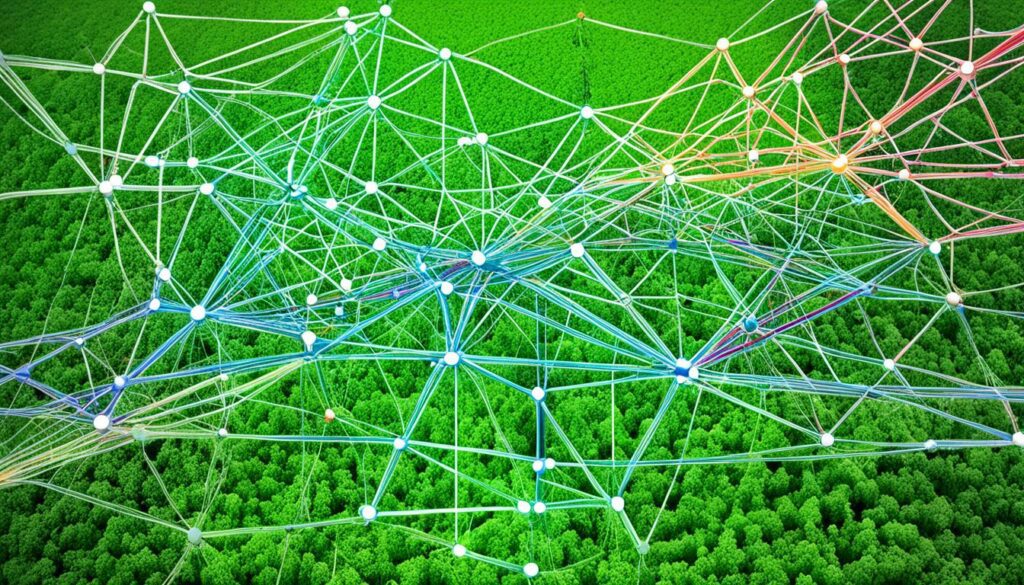
Farmers and researchers want a big, top-quality image dataset with lots of crop types. Such a dataset would make predicting diseases more accurate and help share farming knowledge better.
Look at how well these AI and deep learning methods can work:
| Statistics | Details |
|---|---|
| Average AUROC of prediction models | 0.917 |
| Global grain yield loss due to diseases and pests | 15–40% |
| Yield loss from powdery mildew in strawberries | Up to 70% |
| Annual crop yield loss | Escalating |
| Pesticides targeting pests | Only 0.1% effective |
We aim to tackle these issues and cut costs in farming. By doing so, we can boost crop yields and make fighting diseases more effective with smart tech and vast datasets.
Transfer learning is changing how we predict crop diseases. It moves knowledge from one area to another, boosting agricultural tech’s power. By using already trained models for new jobs, we spot diseases faster and better.
Transfer learning fixes issues in old machine learning models. These often needed lots of data and power. It lets us use ready-made models, speeding up disease guesses. This method is key in spotting all kinds of crop sickness.
This approach helps a lot in farming tech, especially in spotting crop diseases early. It brings some big pluses:
The effects of this method in farming are wide-reaching. It lets us keep track of diseases live, which helps stop crop losses. This is key for our food system’s future.
AI methods for spotting and grading crop diseases are growing. Among them, transfer learning marks a big step forward in disease watching, promising improved results.
| Algorithm Type | Accuracy Achieved | Examples of Use |
|---|---|---|
| Traditional ML Algorithms | Varied by dataset | KNN, SVM, ANN |
| Convolutional Neural Networks (CNN) | 96.74% – 99.35% | DenseNet201, ResNet101, EfficientNetB7 |
| Emerging DL Algorithms | 97.79% | Capsule Networks, Vision Transformers |
Adding transfer learning to our crop checking tools is smart. It lets us do more with the info we have. And it opens up new ways to use tech for farming.
Ensemble methods bring together many machine learning models to boost predictive accuracy. This is especially true for predicting crop diseases. By uniting various models, they cut down on errors, handle noise, and make stronger forecasts.

Ensemble methods blend different machine learning algorithms to create more accurate models. Even though a single model may have flaws, working in a team overcomes these issues. Techniques like bagging, boosting, stacking, and voting demonstrate this well:
Research and real cases show ensemble methods are effective in agriculture. In Bangladesh, a mix of K-nearest Neighbor, Random Forest, and Ridge Regression has shown great success in predicting crop yield:
| Crop | MSE | R² |
|---|---|---|
| Aus Rice | 0.009 | 99% |
| Aman Rice | 0.92 | 90% |
| Boro Rice | 0.246 | 99% |
| Wheat | 0.062 | 99% |
| Potato | 0.016 | 99% |
The Diebold–Mariano test shows significant improvement over older techniques. Methods like Random Forest, AdaBoost, and Gradient Boosting play a key role in early disease detection and improving crop health, curbing the impact of diseases.
Deep learning algorithms have changed how we process images to detect crops. They are better than older ways. For farming, this shift is key. It helps to watch over plant health as farms deal with more crop loss each year from diseases and pests. Farmers often handle these problems with little tech help, making their actions less effective.
New deep learning models, like capsule neural networks and vision transformers, are catching our eye. They could make spotting diseases even more precise, affecting how much crops grow. Deep learning is critical for looking at things clearly, like spotting objects in images and sorting them out, in agricultural tech.
Even with progress, we still face some hard issues. Things like keeping data safe, needing a lot of computing power, and being ready for new plant diseases are challenges. We need strong, smart deep learning models and to fit them well in farming. Solutions involve using models already trained and AI. This can mean better identifying disease and how serious it is. That would step up farm health checks and tech in agriculture.
Studies in disease prediction show big achievements in farming. They use smart models to predict crop diseases better. This has led to large improvements in the way we handle diseases on our farms.
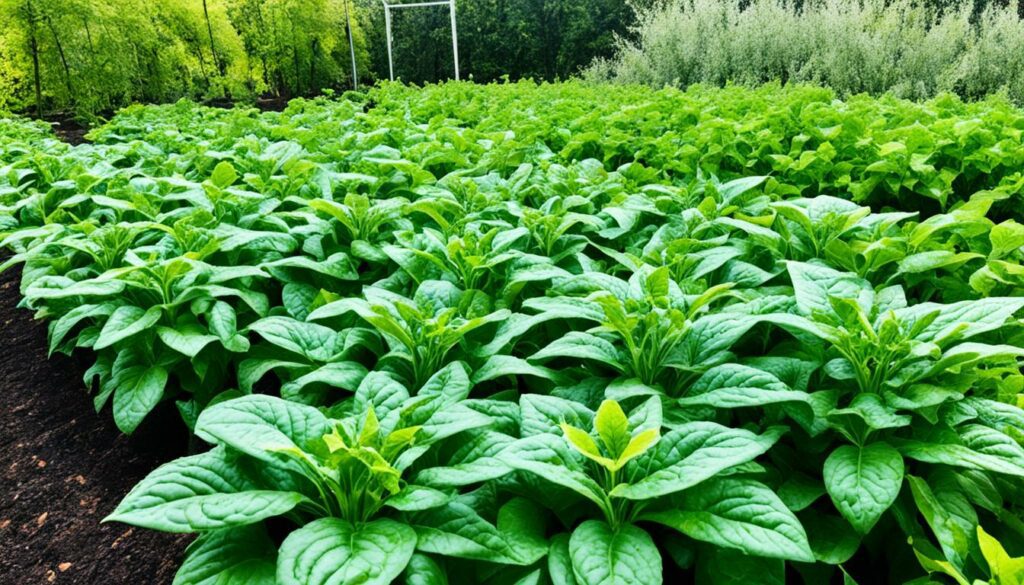
The fight against GLRaV-3 in U.S. grapevines is a great example. It’s a disease that costs about $3 billion each year. By using AVIRIS-NG, they checked 11,000 vineyard acres in California. They could spot sick vines with 87% accuracy, even before they showed symptoms. This gave growers a year to act, thanks to tools in the sky and on the ground.
These cases taught us a lot. Using a mix of ways to predict diseases makes them more accurate. For instance, the Resnet18 model was 99.67% accurate at spotting black pepper diseases. Also, taking real-time photos with top-notch gear helps build excellent data. And having a lot of different data, like from black pepper farms in India, is key.
Moving to the microbiome, it’s clear its research is essential now. In the last ten years, there have been over 40,000 studies. These have helped make better products and keep them healthy. Thanks to fast DNA sequencing, we know more about helpful microbe groups. This is making our food systems more sustainable.
Here are the results on how well various deep learning models can predict crop diseases:
| Model | Accuracy Range (%) |
|---|---|
| Inception V3 | 99.1 – 99.7 |
| GoogleNet | 99.1 – 99.7 |
| SqueezeNet | 99.1 – 99.7 |
| Resnet18 | 99.67 |
From these applications, we learn that the future is in mixing new tech and good data. This mix keeps making farming better. That’s good news for our food’s future.
Recent tech changes are helping us predict crop diseases better. They use things like powerful analytics, machine learning, and sensors. These new tools have a big effect on farming, making it faster to spot and fix issues. This helps grown more food while keeping the land healthier.
Now, farming is using tech to deal with crop diseases. Sensors collect real-time info from crops. Then, this data goes into smart algorithms. This helps experts see disease signs early. India, a big player in farming, is already using these techs well.
Tech builds models that can spot disease trends. This makes old methods of finding diseases better. High-tech cameras and deep learning tools help classify and spot diseases accurately.
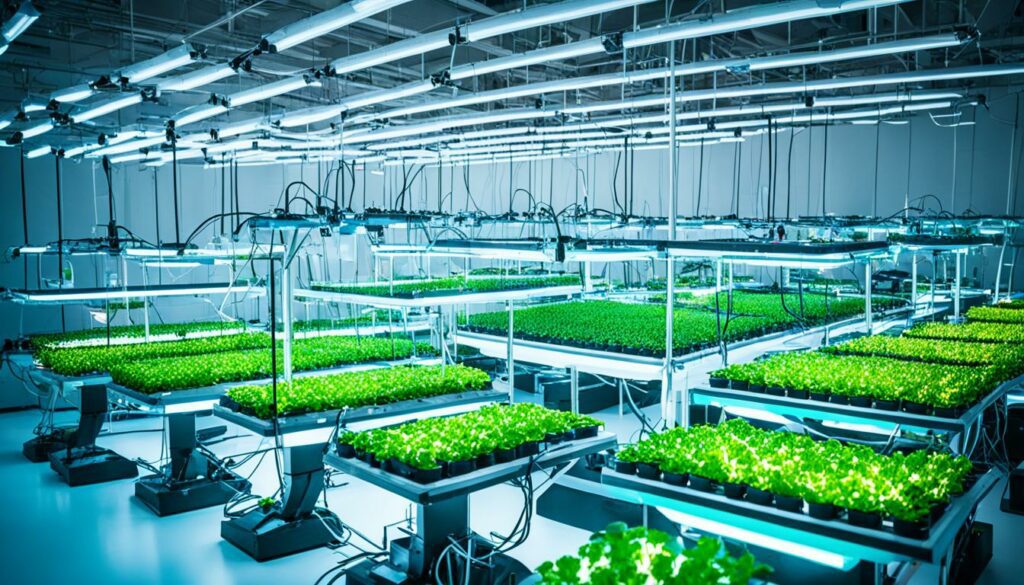
These new techs are making a big difference in farming. They help catch diseases early. This could save up to a third of lost crops each year. They also cut down on manual work and make crops better. It’s great for farming and the planet.
Using tech like this can make farms almost 70% more profitable. It shows in real cases. With the right education and tools, farmers can manage diseases better. It also helps the planet. Governments are starting to support these techs more for a better future for farming.
| Technological Innovation | Agricultural Impact |
|---|---|
| AI and Machine Learning | Improved predictive accuracy, reduced labour costs, enhanced crop quality |
| Sensor Technologies | Real-time data collection, early disease detection |
| Precision Agriculture | Increased profitability, better resource management, sustainable practices |
| Advanced Analytics | Data-driven decision making, efficient disease control plans |
To wrap up, these new technologies are changing how we fight crop diseases. They’re making farming smarter, more earth-friendly, and ready for any disease threats.
Exploring crop disease prediction shows us the future of farming is changing fast. Every year, more crops are lost to diseases and pests, and their quality drops. This is by Skendžić et al. (2021). Farmers spend a lot to fight these issues, with little help. This is a key reason why we need new tech solutions.
Artificial intelligence (AI) and machine learning are becoming key in farming. They can detect and measure crop diseases very well. Chouhan, Kaul, and Singh (2019) showed AI is quite effective in this. Using things like Convolutional Neural Networks (CNN) also greatly improves disease prediction, according to Khan et al. (2021b). These new technologies show us better ways to look after plants.
Looking at diseases with machines, like by checking leaf colour, is a big help. Abdu et al. (2020) and Barure et al. (2020) explain this well. Also, figuring out how much of a crop is actually diseased helps a lot. Bringing together lots of these new tech methods could really change how we fight plant diseases in the future.
Using machine learning and other techs can greatly improve predicting and managing crop diseases. It helps farmers a lot and supports farming in a better way. This can lead to a future where crop diseases are not as big of a problem, and farming can flourish.
Crop disease prediction uses new tech to spot disease outbreaks early. Knowing this info lets farmers protect their crops better. This stops big losses and keeps our food supply safe from pests.
Machine learning helps computers see patterns in pictures of crops. By learning from these patterns, they become better at spotting diseases. This tech offers farmers smart and low-cost ways to manage crop diseases.
CNN and DBNs are types of computer models that look at crop images in detail. They are very good at noticing small signs of disease. This is much better than the old methods.
Digital image processing and learning from data can see early signs of disease in crop pictures. This helps farmers catch diseases before they spread too much. It makes our food system stronger against troubles.
Data analysis cleans up and makes sense of lots of information. This helps computers predict diseases accurately. It’s like the foundation of how technology helps in farming.
ANN can handle a huge amount of data. It learns from patterns in the data to become better at spotting crop diseases. This leads to better and automatic ways to take care of crops.
SVMs are very good at sorting out disease information into the right groups. They work well even when there’s not much information. In farming, they often do better than other methods.
KNN looks at how close different bits of disease information are. By doing this analysis, it can predict diseases well. It’s a simple yet effective tool for fighting crop diseases.
Datasets are a big deal for making smart models that predict diseases well. They help in understanding crop health better and share info among farms. This boosts farming research a lot.
Transfer learning uses models that have learned to do one task to do another related task. It makes disease detection more efficient, fitting different farm situations better.
Ensemble methods mix many models together to predict diseases better. By using a group of models, it gets rid of problems that might come up with one model. This leads to smarter farming decisions.
New algorithms and sensors are getting better at finding diseases early on. AI and machine learning are still changing, making detecting plant diseases even more exact.
In the real world, advanced prediction models are showing they really work. These examples help us see how tech can make a big difference in farming. They teach us a lot about using technology in the future.
Innovations in tech, like better analytics and sensors, are making predictions faster and more exact. They are making agriculture more about using data, which helps farmers respond better to crop diseases.